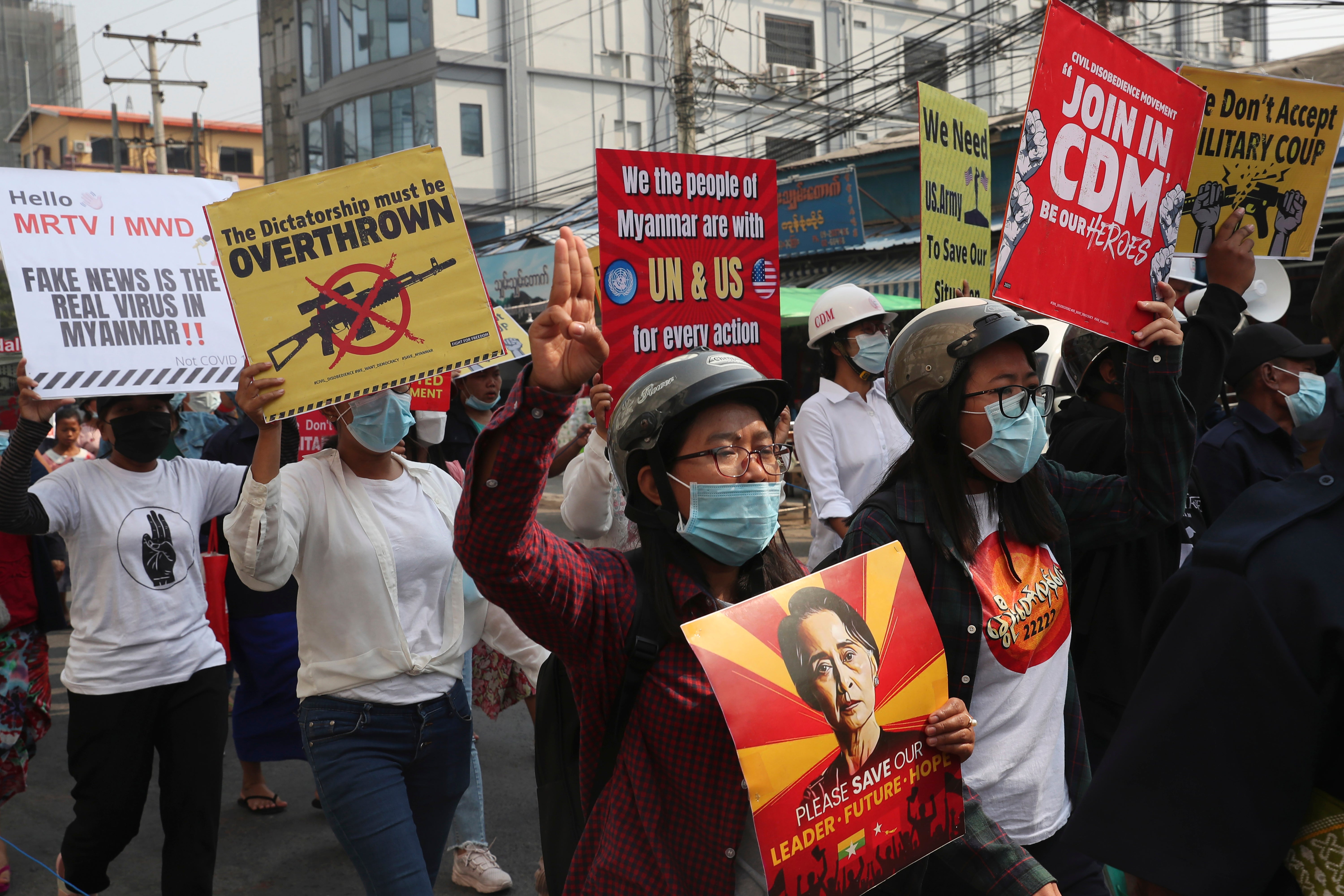Myanmar junta keeps pressure on protesters, journalists
Police in Myanmar have fired rubber bullets and tear gas at protesters in the country’s two largest cities and elsewhere, as authorities continue their harsh crackdown on opponents of last month’s military coup

Your support helps us to tell the story
From reproductive rights to climate change to Big Tech, The Independent is on the ground when the story is developing. Whether it's investigating the financials of Elon Musk's pro-Trump PAC or producing our latest documentary, 'The A Word', which shines a light on the American women fighting for reproductive rights, we know how important it is to parse out the facts from the messaging.
At such a critical moment in US history, we need reporters on the ground. Your donation allows us to keep sending journalists to speak to both sides of the story.
The Independent is trusted by Americans across the entire political spectrum. And unlike many other quality news outlets, we choose not to lock Americans out of our reporting and analysis with paywalls. We believe quality journalism should be available to everyone, paid for by those who can afford it.
Your support makes all the difference.Police in Myanmar fired rubber bullets and tear gas at protesters in the country's two largest cities and elsewhere on Friday, as authorities continued their harsh crackdown on opponents of last month's military coup.
A German news agency reported the apparent arrest of a Polish freelance journalist, in the latest attempt by the junta to control coverage of the protests.
The use of tear gas and rubber bullets was reported in Yangon and Mandalay, as well as in Mogok, in north-central Myanmar’s gem-mining region, and Twante, a town just west of Yangon. There were reports that live ammunition was used in some areas, but these could not be immediately verified.
In Mandalay, where a protester was killed Thursday, about 500 railway workers marched down a city street to show their opposition to the military government despite the threat of lethal force.
Protesters held huge rallies and marches in Mandalay in the days following the army's Feb. 1 takeover, but since then have changed tactics, breaking up into smaller groups in response to the increasingly uncompromising actions by security forces, who have repeatedly used live ammunition against crowds.
In Yangon, riot police fired tear gas to break up a protest, and demonstrators quickly sprayed vapor from fire extinguishers as they retreated.
The use of fire extinguishers — common now in protests across Myanmar — is intended to smother the tear gas and also create a vapor screen that makes it harder for police to pursue or shoot demonstrators.
At least 10 people were fatally shot by security forces on Thursday, including six in the town of Myaing in the central Magway region, local press reports and posts on social media said. In many cases, photos of what were said to be the bodies of the dead were posted online.
Also Thursday, the independent U.N. human rights expert for Myanmar, Tom Andrews, said “credible reports” indicated security forces in the Southeast Asian nation have killed at least 70 people and cited growing evidence of crimes against humanity since the military ousted the elected government of Aung San Suu Kyi.
Andrews criticized the U.N. Security Council for what he called an insufficient response to the violence. Speaking to the U.N. Human Rights Council, he said violence against protesters and even “people sitting peacefully in their homes” was rising. He said the junta was detaining dozens, sometimes hundreds, of people every day and more than 2,000 have been detained since the coup.
Local media in Shan State in eastern Myanmar reported Friday that a freelance journalist from Poland was beaten and arrested by security forces in the eastern city of Taunggyi.
Germany’s DPA news agency said it appeared the man is Robert Bociaga, 30, who has been working for them, but it has not been able to contact him.
“We are deeply shocked by the arrest and apparent mistreatment of Robert Bociaga,” the agency’s deputy editor-in-chief Sven Goesmann said, calling for his release. “This is an intolerable and unacceptable attack on the freedom of the press and, even in this brutal form, is unfortunately not an isolated case.”
The Polish Foreign Ministry confirmed the arrest of a Polish journalist but had no further details. It said it was trying to contact the detained man and obtain information about his health and legal situation.
In Yangon on Friday, a court held a hearing for an Associated Press journalist detained while covering a protest last month. The lawyer for Thein Zaw said the court extended his detention until the next hearing on March 24. He is facing a charge that could send him to prison for three years.
Thein Zaw was one of nine media workers taken into custody on Feb. 27 in Yangon and has been held without bail. Thirty-eight journalists are confirmed to have been detained since the military takeover. The ruling junta has also canceled the licenses of five local media outlets that extensively covered the protests, but they have continued in operation.